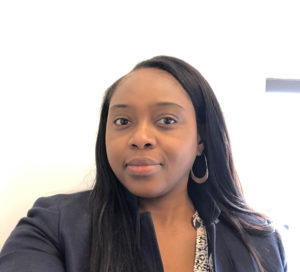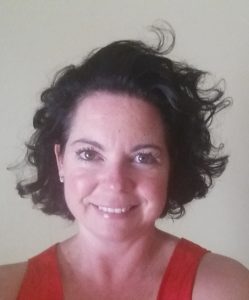March 17, 2021
Reading Time: 5 minutes


This video is a recording of an AIA New Jersey webinar presented by the Equity in Architecture Committee on the AIA National Equity Guide to Measuring Progress. The presenters are three AIA women in architecture known for their commitment to promoting equity: Fareh E. Garba, AIA; MerileeMeacock, AIA; and Stacey Ruhle Kliesch, AIA. The presentation was originally offered live over Zoom on October 21, 2020.
This webinar is designed to assist individuals, firms and the profession in measuring progress towards becoming more equitable. This live, interactive webinar teaches the principles from the AIA Equity Guide to the Architectural Profession, Chapter 9: Measuring Progress. It is said that if you can measure it, you can manage it. Identifying actions an individual employee, a firm, or the profession can take that will most move the needle starts with establishing goals, strategies for meeting them, and the metrics to help evaluate progress and adjust course. Using a metrics framework helps keep leaders and employees engaged and the profession achieves its goals. This course outlines ways of determining what issues underlie the use of metrics as well as how to measure progress toward the resulting goals. Measuring the current state of EDI is essential to lead change, regardless of the current baseline levels of awareness or knowledge. Data can make the strengths, challenges, and weaknesses within a system appear to allow these factors to be acknowledged and potential solutions designed. Effective strategic plans often include metrics to clarify the connection between strategy, measurement, and achievement, and any firm that sincerely intends to make strides in improving equity needs to incorporate equity metrics into its fundamental planning. Metrics can be a helpful lagging indicator of what is working or not, or they can be a leading indicator of likely success. They can serve as a reflection of the firm at a point in time, and they can actively drive behavior and result in change. This course relates to the architectural profession by providing tools and lessons that the attendees can apply to their own lives to increase equity in their personal and professional communities. Increasing equity is currently one of the highest priorities of AIA for the architectural profession. Having member firms adopt practices that increase equity, diversity and inclusion and promote empathy for minority communities leads to stronger, more successful, and more sustainable practices. The American Institute of Architects, as part of the global community, champions a culture of equity, diversity, and inclusion within the profession of architecture to create a better environment for all. Achieving this vision has a direct impact on the relevance of our profession and the world’s prosperity, health, and future. This course directly aims to move the needle with regards to equity, diversity, and inclusion through teaching best practices in the area of community engagement.
In its celebration of humanity, nature, and purpose, Merilee’s approach to architecture design strengthens the social fabric through equitable design. Merilee crafts meaningful places by transforming the built environment to celebrate vibrant live-work-learn-play environments. A true visionary, Merilee leads the efforts in her firm to push innovation through the empowerment of people and ideas. Merilee believes in the strength of an inter-disciplinary approach to design, orchestrating diverse expertise drawing from multiple industries to help inform the design vision and process. She chairs her town’s zoning board and is known for advocating for the community’s voice in the planning of her town’s transformation. Merilee’s legacy of design unites people, imbuing form and function with humanity and meaning to create a richer, more fulfilling experience for all.
Fareh Garba is an architect for Gensler’s Morristown office with nearly 20 years of experience in new and adaptive re-use projects, commercial offices, mixed-use, affordable housing projects in NYC and NJ, and historic preservation. Her work includes the WTC Memorial Museum, the Angry Orchard Innovation Center, and the Human Performance Institute. Of late, Fareh is an architect for Gateway, Newark’s office complex turned mixed-use, transit-oriented development, adjacent to Penn Station.
Fareh completed her secondary education in Nigeria before receiving her Bachelor of Architectural Studies at the State University of New York at Buffalo. She also has a Master of Architecture degree from the University of Pennsylvania Weitzman School of Design.
Stacey is the Principal at her firm, Stacey Ruhle Kliesch, Architect, LLC. She is licensed to practice architecture in NY and NJ and to buy and sell real estate in NJ. She is a past president of AIA NJ and The Architects League of Northern New Jersey. Stacey is the immediate past chair for the AIA NJ Women in Architecture and K-12 Archit4ectural Education Committees and the founder of AIA NJ’s Equity in Architecture Committee. She has developed a nine-part lecture series presenting the AIA National Guides to Equitable Practice and is also developing a firm credentialing system to identify firms that encourage and demonstrate equitable practice.
Architects are creative professionals, educated, trained, and experienced in the art and science of building design, and licensed to practice architecture. Their designs respond to client needs, wants and vision, protect public safety, provide economic value, are innovative, inspire and contribute positively to the community and the environment. Founded in 1857, the American Institute of Architects (AIA) consistently works to create more valuable, healthy, secure, and sustainable buildings, neighborhoods, and communities. Through a dynamic network of more than 250 chapters and more than 95,000 member architects and design professionals, the AIA advocates for public policies that promote economic vitality and public wellbeing. Members adhere to a code of ethics and conduct to ensure the highest professional standards. The AIA provides members with tools and resources to assist them in their careers and business as well as engaging civic and government leaders and the public to find solutions to pressing issues facing our communities, institutions, nation, and world. The organization’s local chapter, AIA New Jersey, has served as the voice of the architectural profession in the Garden State since 1900. Based in Trenton, AIA New Jersey has over 2,000 members across six sections. For more information, please visit http://www.aia-nj.org
By Stacey Ruhle Kliesch, AIA, AIA NJ Advocacy Consultant | Posted in EquityInArchitecture, Women in Architecture | Tagged: #diversity, #EDI, #equity, #EquityCommittee, #EquityInArchitecture, #FarehEGarbaAIA, #FreeMemberBenefit, #Inclusion, #JEDI, #MerileeMeacockAIA, #StaceyRuhleKlieschAIA, #WIA, #womeninarchitecture, #WomensHistoryMonth | Comments (0)
Architects are creative professionals, educated, trained, and experienced in the art and science of building design, and licensed to practice architecture. Their designs respond to client needs, wants and vision, protect public safety, provide economic value, are innovative, inspire and contribute positively to the community and the environment.

414 Riverview Plaza, Trenton, NJ 08611
(609) 393-5690
info@aia-nj.org